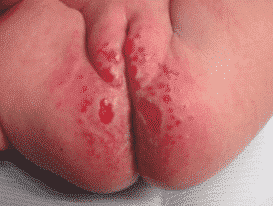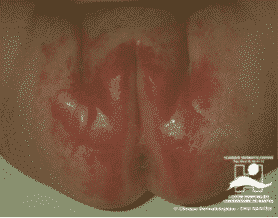Did you read the previous part about fungi?
If you are wondering what to use, prevent, or heal your baby’s diaper rash, you are not alone!
It’s difficult choosing the right product for the right problem. Should you use a cream, salve, lotion, ointment or paste? All of these products can be useful, but it depends on the issue and your goal. Do you want to hydrate your baby’s skin? Do you want to protect it from an irritant? Or is it to provide a protective screen for redness?
Whatever the product, it has to be made for babies with ingredients that follow current standards – alcohol-free, fragrance-free, colourant-free, hypoallergenic and not irritating for a baby’s skin and eyes.
Diaper rash occurs frequently. Why?
Explanations:
Diaper dermatitis affects more than half of all babies, and is caused by a group of factors:
- A damp environment in the diaper
- Exposure to irritants such as urine and stool
- Pre-existing seborrheic dermatitis
- Friction between diaper and skin folds
- Chemical products in diapers, creams and wipes
- A baby’s urine is very alkaline (alkaline PH, non-acidic) and this alkaline environment leads to the activation of bacteria found in a baby’s stool. These bacteria produce enzymes that irritate the skin, leading to diaper rash which breaks down the skin barrier.
- This alkaline environment can also lead to a fungal infection called Candida albicans.
Recommendations:
- For young babies, hydrate their bottoms with hypoallergenic cream after the bath to prevent redness. This allows them to maintain their cutaneous barrier.
- It’s important to frequently change their diaper to prevent dampness and contact between urine and stool. If you use disposable diapers, you can try to switch brands to see if there are chemical components in the diaper. Don’t over wash your baby each time you change their diaper, and avoid commercial wipes. So if they only had a little pee, you can wash them with a clean cloth and clean water. This will help maintain the skin’s natural hydration and lubrification.
- Make sure that the redness isn’t caused by a fungal infection. The treatment might be different. Signs of Candida infection: small red bumps with whiteheads around the red zone, which in dermatology terms are called satellite lesions. If you see this, apply Canesten or Monistat cream 2-3 times a day for 7-10 days. If there is an open wound, apply antifungal cream, let it absorb and then use a barrier cream over the top.
- When the redness is just starting, dry it and apply a think barrier paste or cream, such as zinc paste, Ihle paste or Vaseline to limit contact with stool, urine and diaper rubbing. It provides a protective barrier to ensure that the skin is not irritated continuously. You can also take a diaper break and let them run around naked. 😊
- If there is no improvement, you can consult your doctor or a dermatologist for a mild cortisone cream prescription which should be applied twice a day until the rash is gone. Don’t be scared of cortisone cream. While never a first option, it is effective as needed if the rash persists or comes back. If the red patches are rough, use cortisone cream. If not, hydrate and use a protective cream. It’s better to use cortisone cream on a small area of skin for a couple of days than waiting for the patches to spread elsewhere, requiring more cortisone cream for more extended periods.


Photo source: dermatologycentral.typepad.com and dermis.net
Continue reading with Eczema.
Source des photos : dermatologycentral.typepad.com et dermis.net


